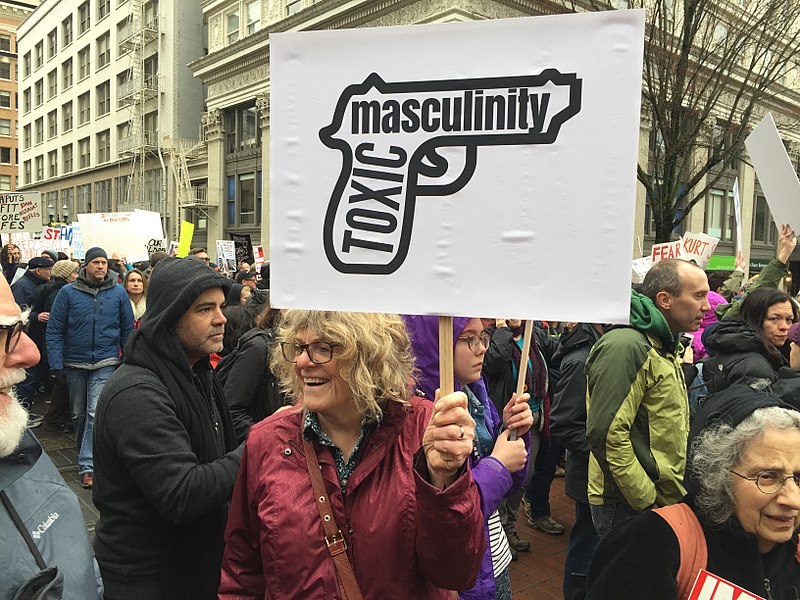We hear a lot about “toxic masculinity” in popular culture these days and sometimes it seems like toxic masculinity — as opposed to healthy masculinity — is to blame for all of the world’s problems. In a recent article in The Atlantic, sociologist Raewyn Connell disagrees with this common conception, arguing that toxic masculinity itself is not a singular cause of problems like violence and entitlement. Instead, Connell points out that masculinity itself is complex.
For example, standards of masculinity vary across time and place. Connell’s work demonstrates that there is not one masculinity, but multiple masculinities — shaped by race, class, culture, social position, and other factors. Thus, the causes of violence and other social problems often blamed on a culture of toxic masculinity are not the same in all places. Connell says,
“The popular discussion of masculinity has often presumed there are fixed character types among men…I’m skeptical of the idea of character types. I think it’s more important to understand the situations in which groups of men act, the patterns in their actions, and the consequences of what they do.”
According to Michael Salter, social scientist and author of the article,
“The problem with a crusade against toxic masculinity is that in targeting culture as the enemy, it risks overlooking the real-life conditions and forces that sustain culture.”
Salter argues thatif we want to stop violence perpetrated by men, we must take a broad approach, understanding men’s material realities — their social positions, the standards set for them, the broader political context and other factors — and institutions that may help perpetuate violence. To explain, Salter uses the example of liquor stores:
“By focusing on culture, people who oppose toxic masculinity can inadvertently collude with institutions that perpetuate it. For example, the alcohol industry has funded research to deny the relationship between alcohol and violence, instead blaming “masculinity” and “cultures of drinking.” In this regard, the industry is repeating liberal feminist arguments about toxic masculinity. However, there is strong evidence that the density of liquor shops in a given geographic area increases the local rate of domestic violence. Any serious framework for preventing violence against women will address alcohol availability as well as masculine norms and sexism.”
In other words, by only focusing on a culture of toxic masculinity, we miss the social contexts and real-life conditions that help to sustain this culture. Instead, we must pay attention to the particularities in men and boys’ lives if we ever hope to end gender violence and inequality.


Comments 2
rabel — April 17, 2019
“Toxic masculinity" is hate speech.
Modern main stream media, social sciences literature and scientific literature generally identify specific racial, sex, gender, sexual preference or other groups using sensitive language that at least does not offend or more commonly is preferentially adopted or approved by the majority of people of that identity. Even when there are small numbers of people who find particular labels offensive, their offense is considered empathetically. Continuing to use the term “toxic masculinity” knowing it causes offense, blaming and demeaning men when they challenge this approach, and more importantly, conducting a dialogue about masculinity that focuses on entirely negative and offensive terms, reveals an entrenched culture of gender bias and a less than benevolent intention.
The nebulous term "toxic masculinity" has been imposed on men and boys despite many stating clearly and passionately that this term is offensive. The literal meaning of the term is clearly offensive, consisting of the extremely negative adjective “toxic” and a gender wide descriptor “masculinity”. None of the behaviours considered destructive are described and many good behaviours associated with masculinity are not specifically excluded. The pretence that the underlying meaning of the offensive term cures it of offense is disingenious at best, and more likely misandry. The smug suggestion that men who object to the term are displaying their toxicity, is to suggest that men who are offended should exhibit more of the traditional stoic masculine behaviours identified as “toxic masculinity”.
For any dialogue on masculinity to be constructive rather than abusive, it must include men from all sectors of the community and use language they consider appropriate. Hate speech like “toxic masculinity” silences and marginalises many men and boys, may in reality be more toxic than the behaviours the term is claimed to describe, and promotes discord rather than constructive dialogue. That means that a dialogue on masculinity must start without feminists of feminist ideology, or be rightfully condemned as a framing of masculinity in an imposed and msandric ideology.
Andre Arsen — November 13, 2021
私はある日医者に来て、私の力の問題について彼に話しました。 まあ、彼はすぐに私が信じていなかったので 薬 、私を最も驚かせた私に薬を助言しました。 そして、非常に無駄に